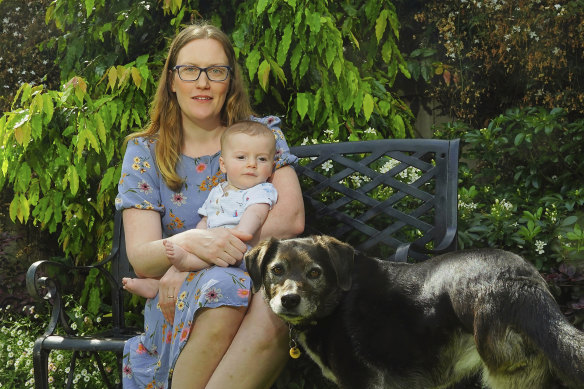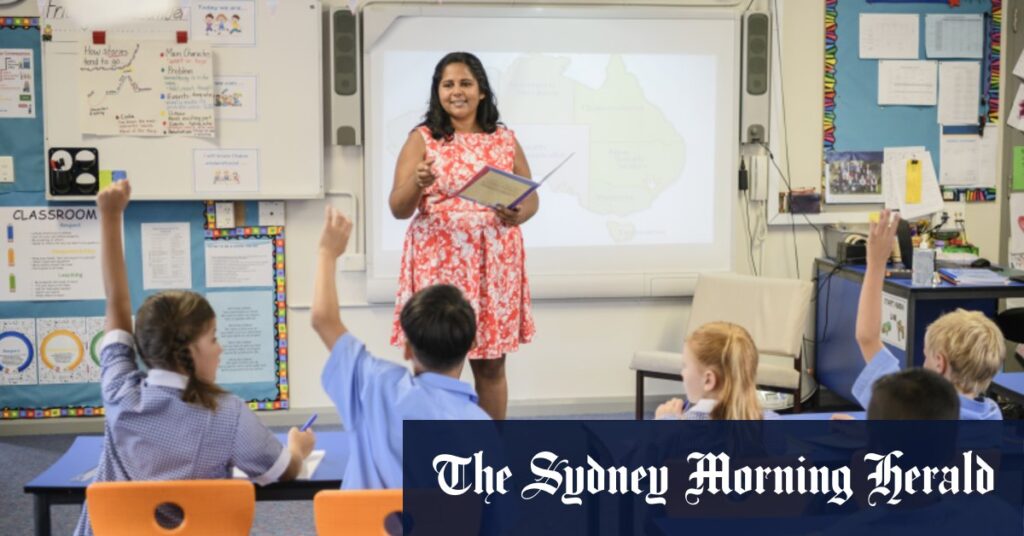“Long-standing staff are seeing teachers with a lot less experience getting a large bonus for moving,” he said.
Loading
Kell said the teacher shortage had become so insidious in Bairnsdale that even jobs offering the $50,000 incentive failed to attract applicants.
“Public education is on the brink of collapse in the regions. We are by far the largest support network for these kids, and I worry for their futures because this will get worse before it gets better,” he said.
Of the 200 teachers who received $5.29 million in government incentives in 2020 and 2021, almost a quarter no longer work at public schools.
Monash University professor of education Jo Lampert said other industries and non-government schools poached teachers from the schools where they were most needed. “Teachers are getting calls all the time from “better schools” offering them jobs for better salaries,” she said.
Lampert, who has worked with governments on developing pathways into teaching for about 20 years, said most initiatives focus on getting people into the workforce.
“Schools are very hard place to be right now. It’s a systemic problem”: Professor Jo Lampert.Credit: iStock
She said schemes like the targeted incentive program got teachers where they were needed, but retention was a problem.
“We notice that teachers might only be staying two years, even with these incentives,” she said.
Lampert said the Queensland government offered incentives for four-year commitments to teach in remote areas, to try to tackle the retention issue. She said the teacher shortage was a combination of a retirement-age workforce, poor pay, increasing workload and poor wellbeing. “Schools are very hard place to be right now,” Lampert said. “It’s a systemic problem.”
Loading
A Victorian government report on teaching from 2022 forecast a shortfall of more than 5000 teachers by 2028, largely driven by demand outpacing supply in the secondary school sector.
While there is no national database on teacher-attrition rates in Australia, academics estimate 30 to 50 per cent of teachers leave the profession within the first five years.
Sara Amos left the industry two years ago due to the workload of public school secondary teachers. Amos, from Surrey Hills in Melbourne’s east, said 60-hour weeks were common, and that workload increased during assessment periods.
“I don’t want to not be a teacher,” she said. “I am currently not a teacher because I wanted to start a family and I couldn’t juggle a young family and the workload.”
Amos said the time required to plan, mark and support students outside the classroom was impossible to achieve during a 38-hour week. “You have about 150 students that you’re looking after every week, and you are trying your utmost to challenge and support in your classroom,” she said.

Sara Amos with son Heath (six months). Amos says of 10 close friends who had all taught together, only three are still teaching.Credit: LUIS ENRIQUE ASCUI
“But there has to be some give because you will run yourself dry and, unfortunately, that is what happened with me.”
Amos said of 10 close friends who had all taught together, only three remained teaching. She said increased funding would allow schools to hire specialists to work with kids who needed extra support, and a database of curriculum resources would give teachers more hours in the day. “Unfortunately, I’m not seeing any big changes in the immediate future,” Amos said.
The Education Department is currently advertising more than 1400 teaching and non-teaching jobs in state schools. Bonuses are available for teachers willing to move to towns with hard-to-fill positions at schools, including Shepparton, Horsham and Kyabram. A three-bedroom house in regional Victoria has a median price of $535,000 compared with a three-bedroom house in Melbourne at $807,500.
Education Minister Ben Carroll said the Labor government had a number of initiatives to get more Victorians to pursue teaching careers. Carroll pointed to Victoria’s free teaching degrees, financial incentives for hard-to-staff roles, paid placements for students training to be teachers and employment-based degrees.
He said there were an extra 1700 teachers employed in the Victorian workforce in the past year.
“Being a teacher is the most important job in the world, and we are helping kids across Victoria get a world-class education with our targeted financial incentives program,” he said.
But Australian Education Union Victoria Branch president Meredith Peace said school staff had been filling the gaps by taking on mounting workloads, leaving many burnt out and driving some to quit the profession.
“Encouraging more people to join the profession is part of the solution, but the state government needs to do more to keep existing teachers in the workforce,” Peace said.
“Retention payments, addressing workloads and full funding for public schools are some of the many solutions the state government can implement right now to recognise their efforts and encourage them to stay in the profession.”
Start the day with a summary of the day’s most important and interesting stories, analysis and insights. Sign up for our Morning Edition newsletter.
Read the full article here

